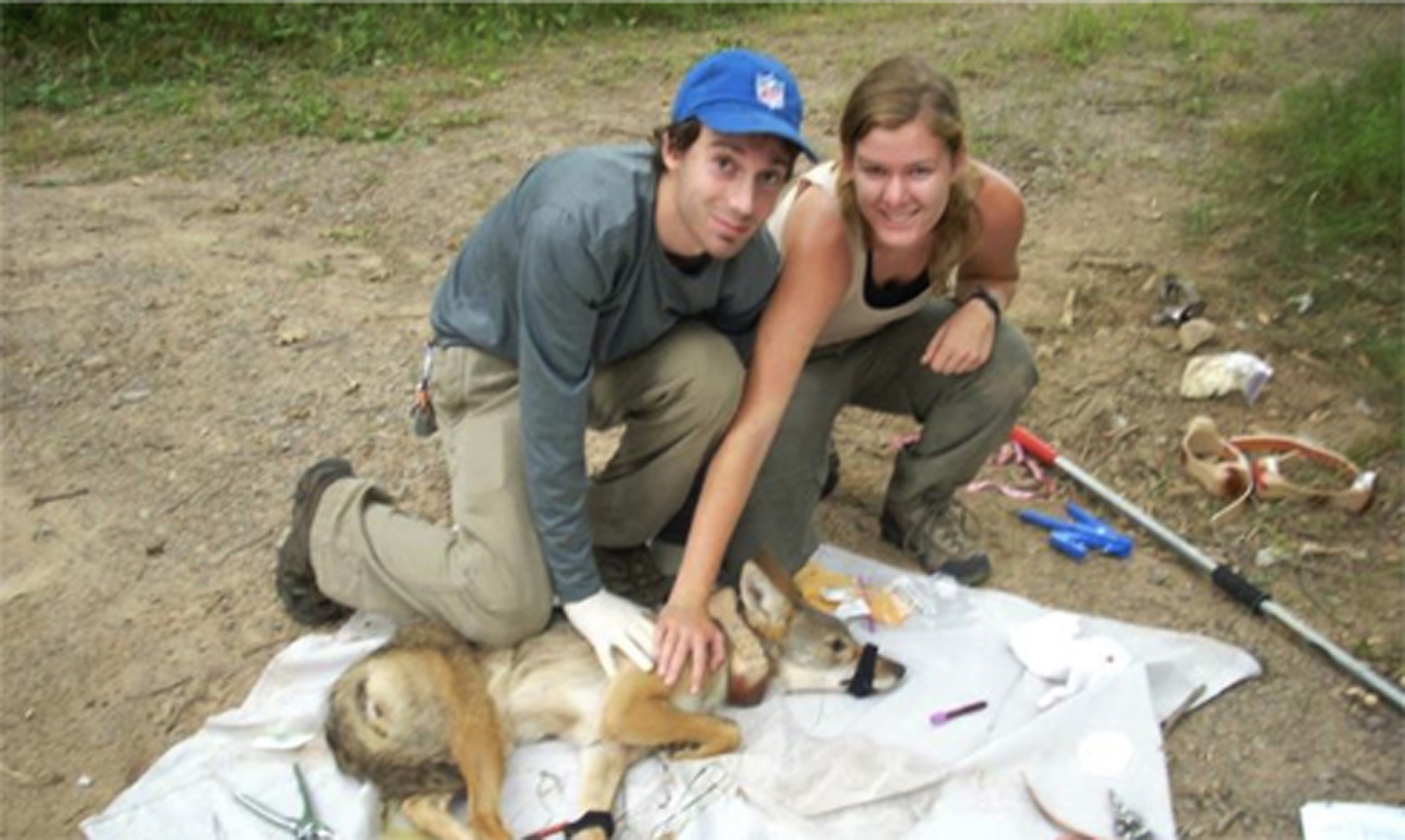Fralin summer fellowship transforms students into research scientists

In the famous Looney Tunes cartoon, Wile E. Coyote desperately schemes novel ways to track and catch the elusive Road Runner. But in the context of wildlife behavior research, two Virginia Tech students found that the tables were turned this summer as they schemed new ways to track and study the elusive coyote.
The coyote (Canis latrains) is a highly adaptable carnivore that lives in many different ecosystems, both rural and urban. Coyotes have been spotted in every county in Virginia and are rumored to have roaming ranges of at least 30 kilometers. This makes them particularly difficult to track, and little is known about coyote ecology, particularly in Appalachian ecosystems.
However, these challenges have not hindered Sarah Webster of Matthews, N.C., a senior majoring in wildlife sciences, and Stephen Perkins of Altavista, Va., a junior majoring in wildlife sciences. The Fralin Life Science Institute's Summer Undergraduate Research Fellowship (SURF) program enabled them to study coyote ecology full-time, as field scientists in Bath County, Virginia.
The two College of Natural Resources and Environment undergraduates were part of a research team that included Marcella Kelly, associate professor of fisheries and wildlife conservation, Dana Morin of San Diego, Calif., a Ph.D. student in fisheries and wildlife conservation, David Montague of Williamsville, Va., a master's degree student in fisheries and wildlife conservation, Josh Kinkead of Bridgewater, Va., a junior majoring in wildlife sciences, and Robert Alonso, a field technician from Arbovale, W.V. The team was based out of a rustic cabin near Lake Moomaw that is owned by the Virginia Department of Game and Inland Fisheries.
Webster and Perkins assisted the team with various projects, but also pursued individual research topics. Webster investigated coyote parasite diversity across a gradient of human impact that ranged from low impact (remote National Forest areas) to medium (rural areas) and high (urban areas). She collected scat samples from eight carefully selected areas, and returned to Virginia Tech to analyze the samples for hook worm, whip worm, tape worm, and round worms -- parasites typically found in domestic dogs. Although results were inconclusive -- perhaps due to the roaming nature of coyotes -- the hands-on experience affirmed Webster's desire to pursue a career in wildlife conservation.
"This summer provided so many valuable new experiences for me, including coyote trapping, small animal handling, genetic sampling, parasite collection, and vegetation surveys," Webster said.
Meanwhile, Perkins researched the spatial ecology of coyotes in burned and unburned forests. He used Moultrie Game Spy Digital Cameras, which respond to heat and motion sensors, to photograph wildlife at all hours in both habitats. He hypothesized that coyotes would be more abundant in burned areas because new, successional, dense vegetation attracts the prey species that coyotes feed on.
However, monitoring revealed that coyotes appeared to have no preference for burned areas, perhaps due to their highly adaptable nature, Perkins said. However, the study did reveal that white-tailed deer are more prevalent in burned forests, and perhaps in the future, coyotes will select these areas in response to deer presence. Through this project, Perkins observed how scientific results can be applied to conservation practices.
For example, he explained that if he were working with a conservation agency, he could use this data "to prescribe forest fires as a management tool to increase white tail deer numbers."
"The SURF program definitely provided me with a research experience I've never had before," Perkins said. "I was actively involved in every step of data collection."
Launched in 2008, the highly competitive SURF program connects students with a faculty mentor for ten weeks during the summer to conduct cutting-edge research relating to a scientific project of interest in the life sciences. Students hail from many departments, including biology, chemistry, biochemistry, wildlife sciences, and human nutrition, foods and exercise. At the end of the summer, fellows present results to peers and mentors during a public symposium. Fourteen students were selected as fellows this past summer.
"The goal of the SURF program is to acquaint students with what it is like to be a research scientist. Many fellows have come away not only with a better appreciation for the career field, but also with one or more publications in peer reviewed journals," said Dennis Dean, director of the Fralin Life Science Institute.
Webster and Perkins are continuing to conduct research during the school year. Perkins will examine coyote diet in the fall season via scat sampling. Webster will assist with a coyote trapping project in October, and is analyzing data from a previous jaguar monitoring trip to Belize.
"As field researchers in wildlife science, we often have many more ideas than we can address. The SURF program is great because it allows us to explore new research avenues or conduct preliminary analyses that would normally not be possible due to time and funding constraints," Kelly said. "Additionally, the SURF program attracts excellent undergraduate students who gain real, hands-on experience in the field collecting data, in the lab analyzing data, and in communicating results through the SURF symposium. The students also get a big resume builder that helps jump-start their careers."




